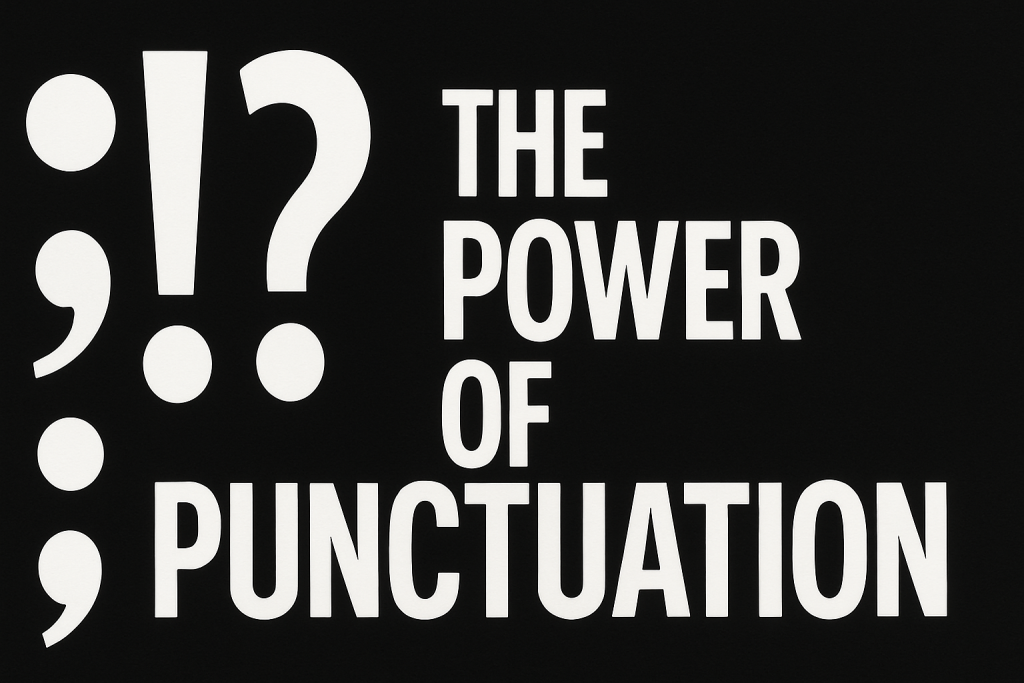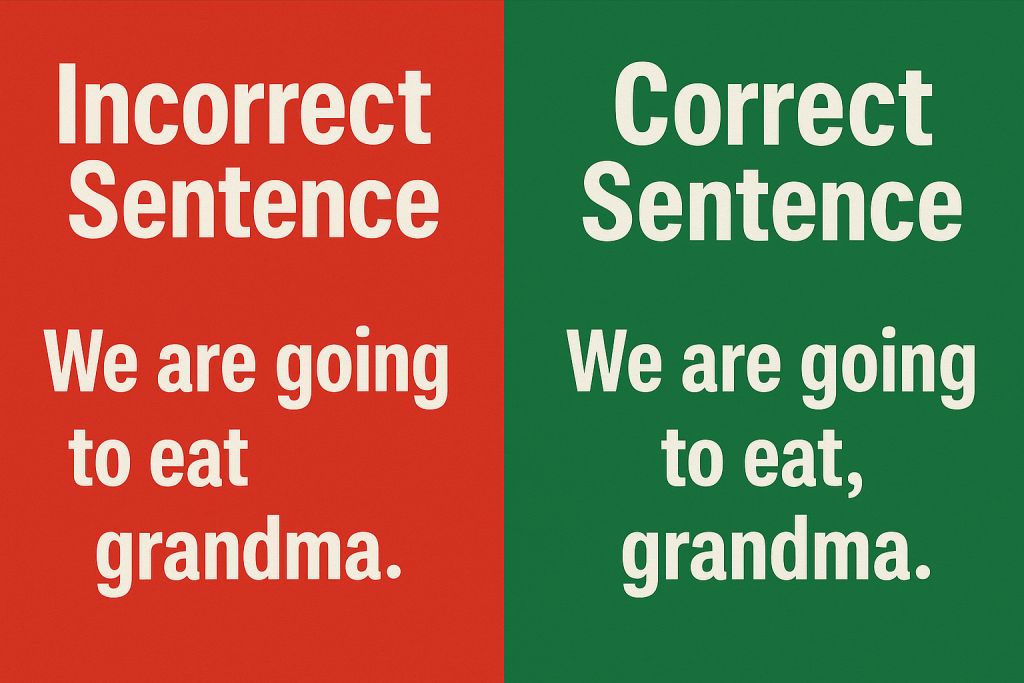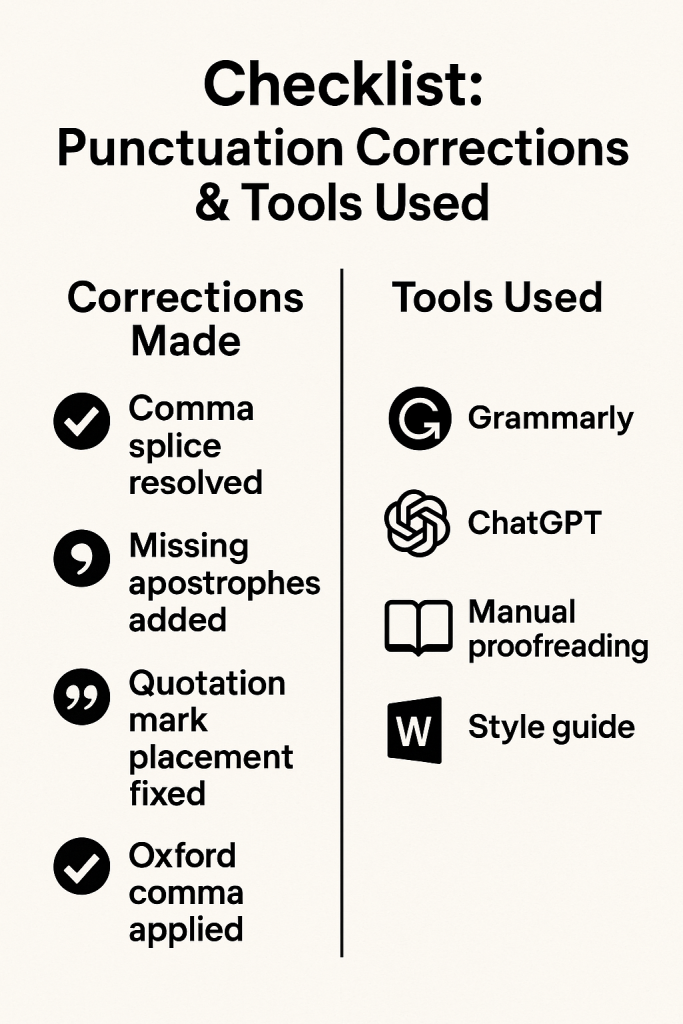Look, punctuation might seem like the quiet kid in the grammar classroom, but ignore it and your sentences will collapse like a bad soufflé. Whether you’re writing a thesis, an email to your boss, or an angry comment on a YouTube video, punctuation rules in English can make or break your message. Get them wrong, and suddenly your dog’s dinner invitation sounds like a crime scene.

This guide is here to help you clean up the chaos—fixing common punctuation mistakes, understanding the point of all those weird squiggly marks, and finally using punctuation like the majestic grammar unicorn you were born to be. Let’s punctuate like we mean it.
English Punctuation Guide: The Basics
Before we dive into the dark arts of dashes and ellipses, let’s revisit the core crew of punctuation marks:
- Period (.) – Ends a sentence. No drama, just finality.
- Comma (,) – Separates items, clauses, and saves lives. Want more on commas in formal writing? Check this out.
- Semicolon (;) – Joins two related sentences like a grammar matchmaker.
- Colon (:) – Introduces lists, explanations, or the part where things get serious.
- Quotation Marks (” “) – Wrap direct speech or quotes in cozy little hug marks.
- Apostrophe (’) – Possession or contractions. (Not to be confused with decoration.)
- Question Mark (?) – Ends a question. Obviously?
- Exclamation Point (!) – Expresses excitement or yelling. Use responsibly.
How to Use Punctuation Correctly: Common Mistakes and Fixes
Let’s break down a few punctuation crimes that happen more often than bad karaoke:

1. The Comma Catastrophe
Mistake: I enjoy cooking my family and my dog.
Fix: I enjoy cooking, my family, and my dog.
Tip: Commas save lives. Literally.
2. Apostrophe Abuse
Mistake: Its a beautiful day.
Fix: It’s a beautiful day.
Tip: “It’s” = “it is.” “Its” = belonging to it. Learn the difference. Save your dignity.
3. The Semicolon Shuffle
Mistake: I have a big test tomorrow, I can’t go out tonight.
Fix: I have a big test tomorrow; I can’t go out tonight.
Tip: Use semicolons to link closely related full sentences. Like a grammar handshake.
4. Quotation Confusion
Mistake: She said I love pizza.
Fix: She said, “I love pizza.”
Tip: Use quotation marks or prepare to sound like a confused robot. Learn more about clear sentence structure right here.
Punctuation Tips: Advanced Usage for Polished Writing
Ready to level up your punctuation game? Let’s talk about the underrated legends:
Dash (—)
Perfect for dramatic pauses—or when you want to sound like you’ve just made a revelation. Example: Grammar isn’t boring—it’s power.
Parentheses ()
Use them for side notes (like this one) that add context without screaming for attention.
Ellipses (…)
Great for trailing off into silence… or showing a thought left hanging. But don’t overuse them… seriously.
Practice Makes Punctuation Perfect
If you want to get good, and I mean *actually good*, you’ve got to practice:

- Use tools like Grammarly or Purdue OWL.
- Read things that don’t make you cringe. Like our post on regional idioms.
- Try out our grammar checker to get a taste of AI judgment.
- Take quizzes. Or just rewrite your tweets with punctuation that doesn’t terrify your followers.
Conclusion: Why You Should Care About Punctuation (Even If You Think You’re Above It)
Punctuation isn’t just grammar fluff—it’s the glue holding your thoughts together. Learning how to fix common punctuation mistakes and mastering punctuation rules in English makes your writing not only readable but respectable. Want more grammar gold? Check out our guide to parts of speech or finally understand why verbs sometimes get an -s.
Now go—place your commas with purpose and join the resistance against the forces of chaos writing.
